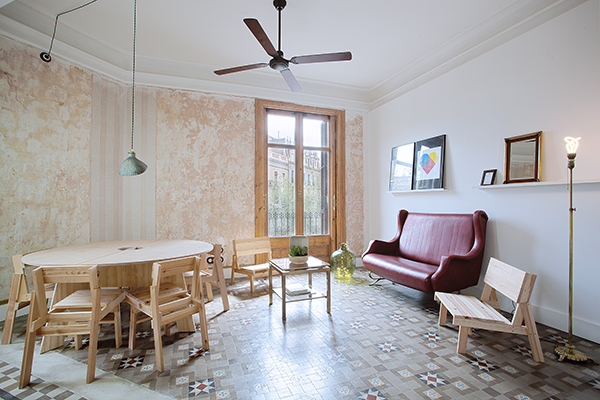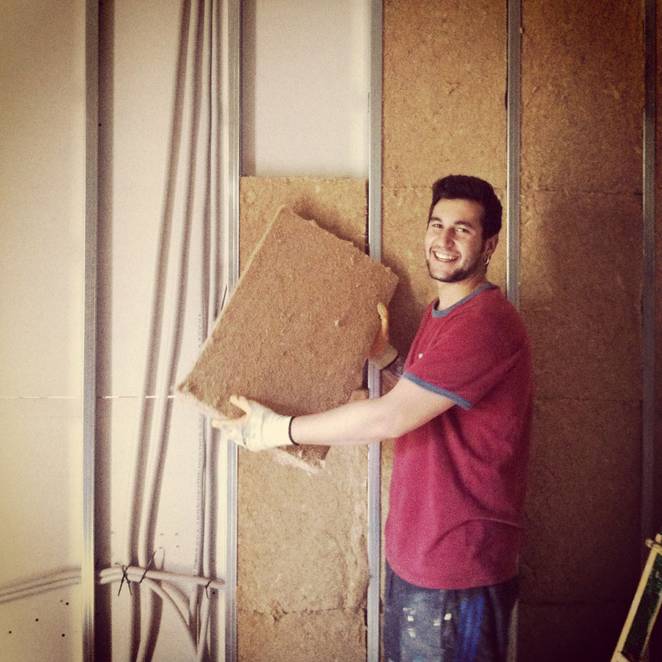Wood fibres as insulation material
Rockwool, or mineral wool, is still commonly used here in Spain for insulation due to its low cost. I read up on it, and as Lloyd, “am still confused” whether this classifies as a green building material or not. Since it is made from a non-renewable material (volcano stone), requires a high amount of energy during production, and is not recyclable or reusable (since we have to cut it to size and there is no take-back program set up), we concluded that we could find a better material.

We looked into cellulose made from recycled paper that is sprayed in between the drywalls, but had to discard this idea due to the high cost, and because the cellulose is difficult to get out for recycling in the future. Since you need to hire special machines for the installation, this only makes sense economically if you have quite a lot of walls to insulate or are constructing a new building.

We kept looking for eco-friendly alternatives and found Isonat Flex by the company Buitex, made in France from wood fibres of pruning and cleaning local forests. This semi-rigid material is still roughly three times the price of mineral wool, but at least as easy to install and much less harmful for the person handling it. It fulfills all the criteria for both fire-resistant, thermal and acoustic requirements and to us it turned out to be the greenest alternative available. Here is why:
Durability
According to Buitex, these plant-based insulation products last the same and even longer than the more traditional ones. Their research lead them to select the best performing ingredients to avoid clumping and degrading, and they estimate it performing during 30 to 50 years.

Recyclability
In order to obtain high durability, Isonat Flex is made of more or less 85% wood fibres and roughly 15% recycled polyester. We weren’t too happy about this fact at the beginning as adding a non-biodegradable material (polyester) results in the wood fibres not being compostable any more. (Even though the distribution company here in Spain claims it to be a compostable material…)
However, we understand that mixing in a technological material is probably necessary to achieve quality and longevity, and what convinced us is the fact that Buitex takes back used insulation materials to recycle properly (upcycle) at their factory in France. The same is done with surplus material during production and left-overs from building sites.
Easy installation
Our builders confirmed that it was not more difficult to apply Isonat Flex to our A+ low-VOC drywalls than mineral wool. All you need is a mechanical saw to cut the material to size. Having said that, correct installation is key for this, or any semi-rigid insulation material, to work.

Natural comfort
We are glad to obtain insulation quality by means of a renewable material such as wood. The idea is to help regulate the temperature in both summer and winter and obtain a maximum comfort all year round.
In order to reduce heating and cooling costs, apart from insulating the walls, we will also install double glazing in the traditional wooden windows and balcony doors, and install a green facade to insulate our top-floor office space.
Originally published on Treehugger.com

